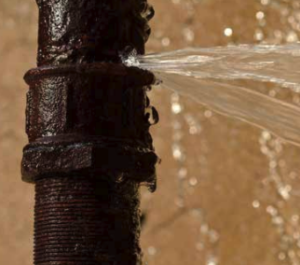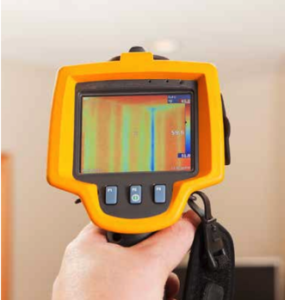The Wacky World of IAQ
HOW TRAVIS SAVED A BALLROOM FULL OF LIVES
A few years ago, I was called in to help a local hotel with the aftermath of a water leak. That may sound like a routine job on the surface, but it proved otherwise. During my time in the building, I discovered a problem so massive it could have been deadly!
Before I get to that, though, let’s rewind a bit. This crazy water loss story revolves around a 25-story hotel, and it all started with a leaky toilet. Imagine an empty room on the 18th floor of a quiet hotel. Everything is silent, and then — drip, drip, drip.
The valve at the back of the toilet tank breaks and water begins to spread across the floor. It floods a total of 15 guest rooms before it’s discovered 8–10 hours later! Worse, it begins to seep down the walls before it infiltrates the lower floors.
 That’s exactly the situation my client was in. As soon as the hotel found the leak, they called in a water restoration company to identify the extent of the damage. The company found evidence of water trickling down from the 18th floor all the way to the 7th! So, they tore out all of the wet components and started drying the build. They also called me to doublecheck their work, and it’s a good thing they did.
That’s exactly the situation my client was in. As soon as the hotel found the leak, they called in a water restoration company to identify the extent of the damage. The company found evidence of water trickling down from the 18th floor all the way to the 7th! So, they tore out all of the wet components and started drying the build. They also called me to doublecheck their work, and it’s a good thing they did.
I arrived on the scene with my thermal imaging camera in hand to look for any water that might have been missed. I confirmed there was indeed water damage all the way down on the 7th floor, but I didn’t stop my investigation there, even though I’d only found one room with damage. I asked the building manager for keys and investigated the lower floors as well.
I didn’t find any damage on the 6th floor, but I still soldiered on to the 5th. Again, there were no signs of damage. But on the 4th floor, my thermal imaging camera revealed multiple rooms with wet walls! Apparently, the flow of water had narrowed down to the 7th floor, then somehow found a way to sneak past the 6th and 5th floors without a trace before reappearing on the 4th. The water remediation company could hardly believe it.
At that point, I wasn’t leaving anything to chance, especially because the 4th-floor room I stood in was located directly above the hotel’s three-story grand ballroom. I took the elevator down to ground level and walked into the massive space. It was dazzling! Beautiful chandeliers swung 20 feet overhead. I looked around for a moment in awe. Then, I pointed my camera upward … and zeroed in on an area 60 feet in diameter. It was so saturated with water that it was about to fall on my head!
No one from the remediation company had considered that the grand ballroom might be at risk. Within days, the ceiling would have caved in, burying the attendees of any event happening inside! I’m not the brightest bulb in the box — I just happened to have a thermal imaging camera and the determination to not give up.
 The remediation company used a moisture meter to spot water, but my thermal imaging camera found things they had missed. We learned an important lesson that day: Moisture meters are helpful for areas you already assume are wet. Thermal imaging cameras save your bacon by finding the sneaky spots!
The remediation company used a moisture meter to spot water, but my thermal imaging camera found things they had missed. We learned an important lesson that day: Moisture meters are helpful for areas you already assume are wet. Thermal imaging cameras save your bacon by finding the sneaky spots!
Just a few weeks ago, I was reminded of this when my thermal imaging camera led me from a leak on the 5th floor of a federal building all the way to the basement. There was an entire pond down there. If your building is at risk of a leak, make sure you either have a thermal imaging camera of your own or have me on speed dial.

